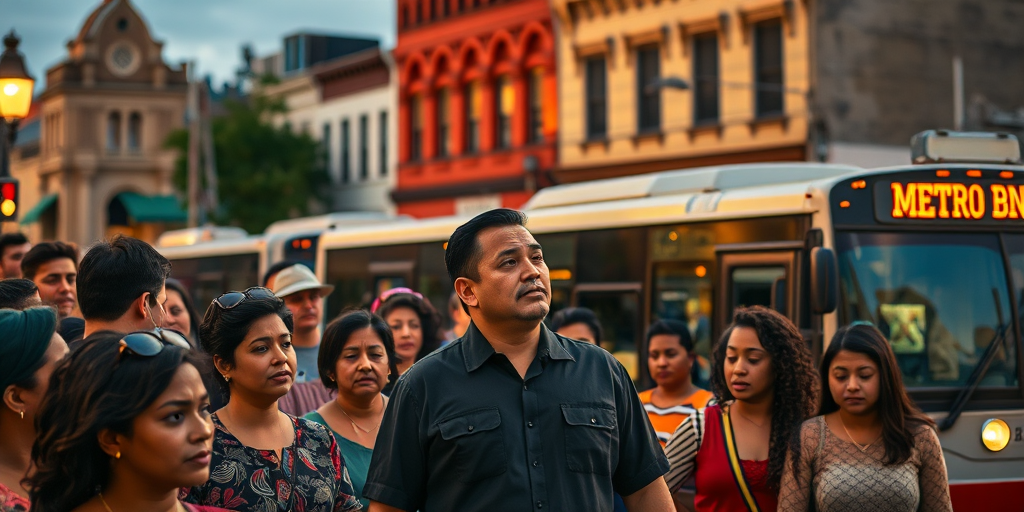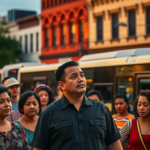Brownsville Metro Explores Route Realignments to Enhance Efficiency and Reduce Delays
Brownsville Metro has announced plans to realign routes 3, 5, 11, and 14, a strategic move aimed at improving transit efficiency and mitigating delays in the Rio Grande Valley’s growing urban environment. As South Texas continues to experience growth, such changes are increasingly vital to meet the needs of Valley residents who rely on public transportation.
Realignment Proposal to Address Rising Transit Demands
The proposed realignment revolves around shifting existing routes to less congested roads, thereby enhancing the punctuality and reliability of Brownsville Metro services. While the destinations of these routes will remain unchanged, transit times are expected to decrease, offering a more streamlined experience for commuters.
Simon Ortiz, Transit Manager for Brownsville Metro, explained the motivation behind this move. “Obviously, the city has grown in this short span,” Ortiz remarked. “We feel like this change will help out and alleviate congestion, target tardiness, and enhance the efficiency of the routes.”
Inviting Community Input Through Public Meetings
In an effort to engage the community and ensure the changes align with public needs, Brownsville Metro will host two public meetings, providing a platform for community feedback. The first meeting is scheduled for August 14 at the Main Library Branch, followed by a second meeting on August 21 at the Southmost Library Branch, both from 5 p.m. to 7 p.m. Residents are encouraged to attend and voice their priorities or concerns regarding these proposed changes.
Community engagement is essential in such endeavors, and Brownsville Metro’s proactive approach exemplifies a commitment to integrating public opinion into transit planning. Maintaining open lines of dialogue can result in solutions that reflect the collective needs of the population effectively.
Broader Context: Growth and Innovation in Brownsville
These proposed transit changes arrive amid a flurry of new initiatives across Brownsville. The Brownsville Independent School District (BISD) recently rolled out a new two-person motorcycle unit within the district police department to enhance traffic law enforcement. Additionally, BISD has introduced a device-free zone policy prohibiting personal communication devices in designated areas to foster focused learning environments.
Moreover, community-driven efforts have ramped up in tackling issues such as illegal dumping, graffiti, and litter as part of a citywide beautification campaign. These initiatives together signify a broader push towards a safer, cleaner, and more connected Brownsville, which supports other aspects of regional growth including transit improvements.
Implications for the Rio Grande Valley Community
For the Rio Grande Valley community, the proposed realignments, if approved and successfully implemented, could offer several benefits. Such changes would likely prompt increased ridership due to improved reliability and accessibility, fostering a transition toward sustainable transportation alternatives in line with future urban planning goals.
Additionally, alleviating congestion on primary thoroughfares could reduce traffic-related distress for both commuters and residents, gradually facilitating smoother city-wide travel during peak hours. This harmonization of transportation systems can nurture a more integrated economic and social environment wherein residents can maximize their ability to participate in regional growth.
Divergent Opinions and the Path Forward
However, despite the prospective benefits, route realignment proposals also elicit varied opinions among the community. For some, concerns emerge about whether the shift to new roads may inadvertently cause inconvenience or necessitate adjusted routines. As such, Brownsville Metro faces a delicate balancing act between transit improvements and community satisfaction.
Resolving differing perspectives requires thoughtful consideration and clear communication about intended outcomes and timelines. According to urban planner Hannah Gonzalez, “It’s crucial that the city continues its collaborative approach by keeping residents informed and involved at every step of these changes to ensure that our infrastructural evolution matches community aspirations.”
Through recognition of diverse viewpoints and continued collaboration, Brownsville Metro is poised to deliver community-centric transit solutions that equitably enhance public mobility within the Rio Grande Valley.
Connecting to Past and Present Initiatives
Public transportation has long been an integral part of the broader effort to nurture a vibrant, accessible, and equitable urban ecosystem in Brownsville. Previous initiatives, which aimed at updating transit technology and systems, laid down necessary groundwork that underscores current proposals.
Such ongoing innovation reflects a broader commitment to progress across different facets of city life, including education, community safety, and environmental sustainability. These collective efforts align with emerging aspirations around sustainable, dynamic, and inclusive living standards, solidifying Brownsville’s reputation as a nucleus of regional advancement in South Texas.
Additional Information and Contact Details
For more information on the proposed route realignments or to provide feedback, residents can contact Brownsville Metro via their website or attend the scheduled public meetings. Participation from the community is invaluable in shaping transit solutions that respect the changing needs and aspirations of Valley residents.
In conclusion, Brownsville Metro’s exploration into route realignment is indicative of a forward-looking perspective aimed at reinforcing the efficiency and reliability of public transportation in the Rio Grande Valley. As this story unfolds, it exemplifies the potential for collaborative, innovative thinking to create a more connected and vibrant future for the region.







